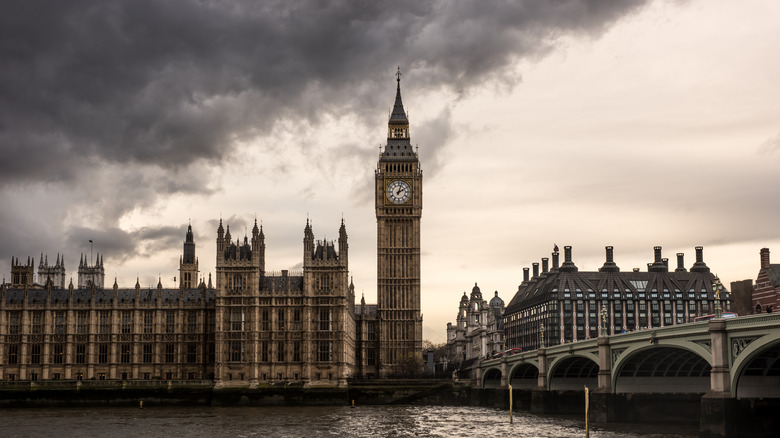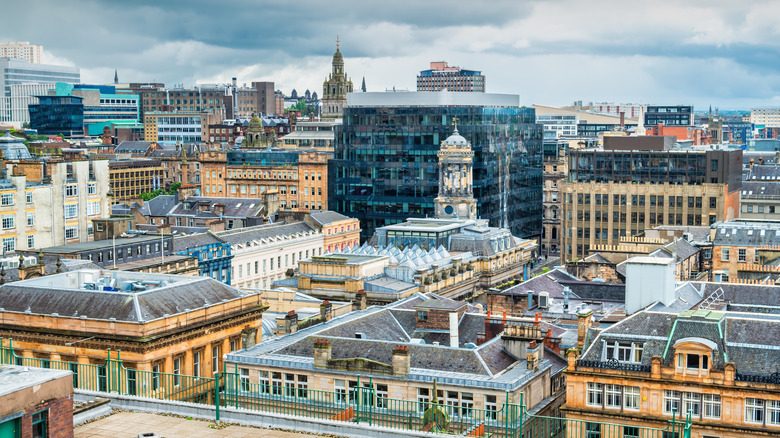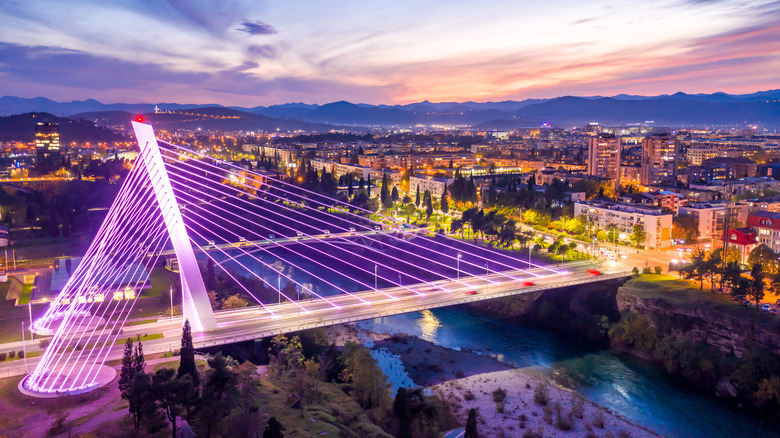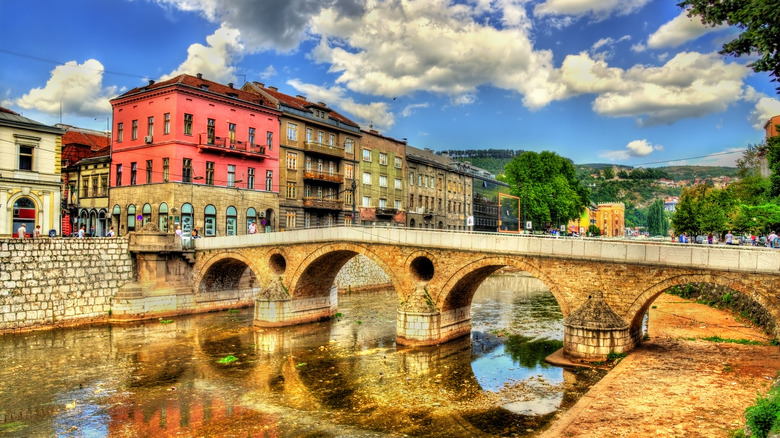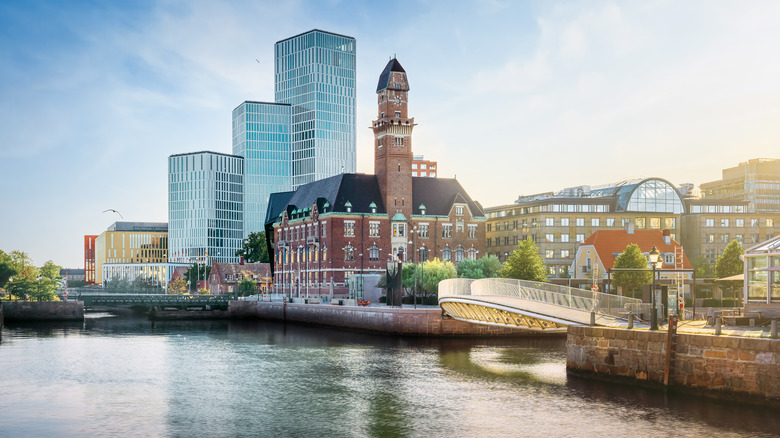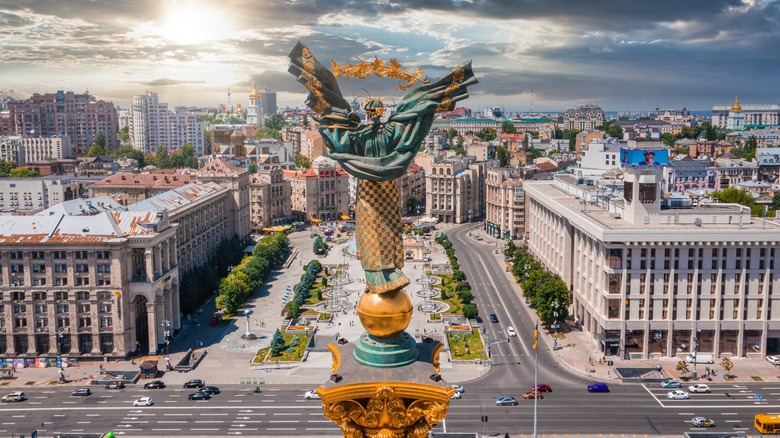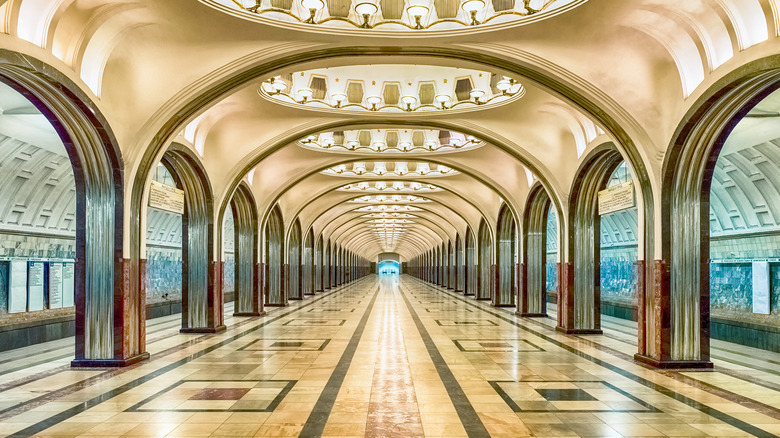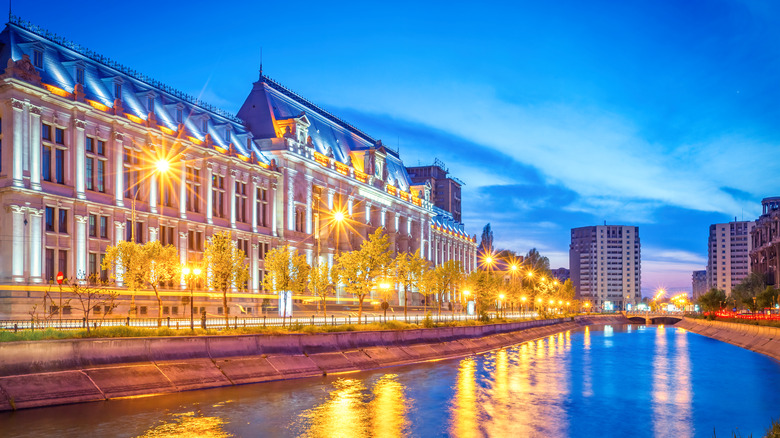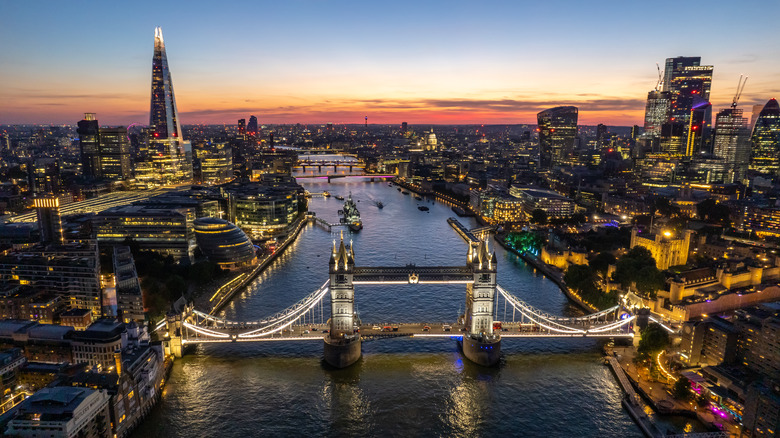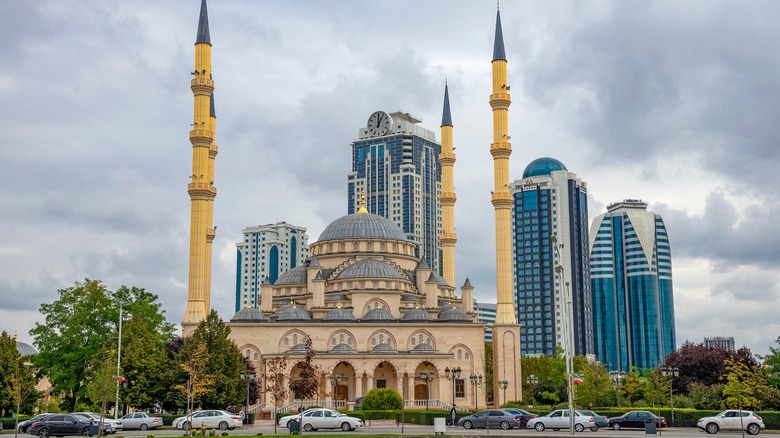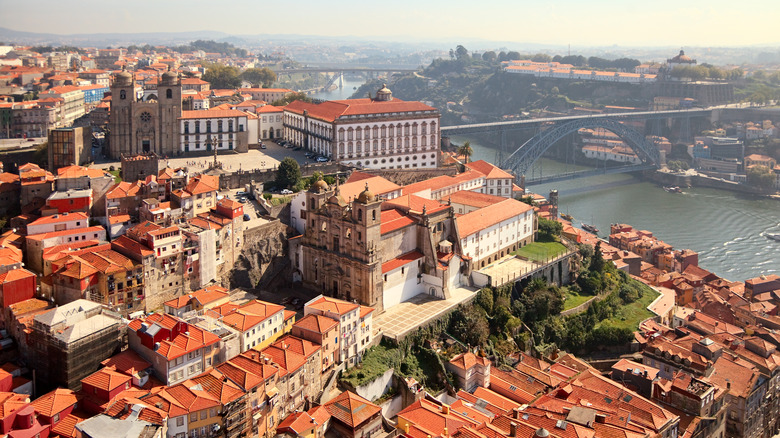Dangerous European Destinations To Skip On Your Next Trip
Travelers looking to experience the world will likely get excited about all kinds of lists detailing fabulous destinations, idyllic scenery, and much more. The world is filled to the brim with picturesque towns, sprawling urban metropolises that never sleep, and everything in between. Unfortunately, there are also a number of places around the world that pose an increased danger to travelers and local residents alike. It's worth noting that danger is always relative, and you're likely to run into trouble if you're not careful, regardless of where you are. At the same time, some areas are more likely to be dangerous than others. For instance, the West Midlands region of the United Kingdom experiences significant volumes of knife crime, though as a tourist, you're unlikely to be caught up in this cycle of violence. Alternatively, Porto is a common tourist destination in Portugal that doesn't pose this same risk of violence, but comes with an increased incidence of pickpockets and other scam artists operating in the area.
There are certainly a few European destinations that come packed with a bit more pulse-raising risk than others. These are the destinations that you might want to consider skipping, or at the very least exercising increased caution while exploring. All of them are fantastic travel destinations, to be sure, but vigilance is likely more important in these cities than some other European travel hubs.
Glasgow, Scotland
Glasgow is a worthwhile place to begin a survey of potentially dangerous destinations. Glasgow is a cultural gem as Scotland's largest city. It was founded in the sixth century, making it incredibly old and full of charming character. However, Glasgow is a bit rougher around the edges than its distant neighbor, Edinburgh. Glasgow's social scene is diverse and exciting, but it's also marked by a sizable underground conflict between rival drug gangs.
Gang violence occurs everywhere in the world, of course, but Glasgow's underworld is marked by a flurry of activity that can spill out and affect the people in the city. If this sounds too risky for you, then you might want to check out Scotland's second-largest city, Edinburgh. Edinburgh is in Scotland's southern reach, and it's also dominated by history and stunning architecture. Edinburgh Castle is a major highlight, while historical tours, pub crawls, and festivals of all sorts often draw excited crowds to the city throughout the year.
Belfast, Northern Ireland
Belfast is another fascinating city. Located in Northern Ireland, the country's capital was an area of significant violence during the Troubles, a conflict between Protestants who wanted to continue being part of the United Kingdom and Catholics who wanted to be part of Ireland. Belfast is a historical community and the subject of quite a few movies, including the 2022 Oscar-winning movie "Belfast." But spending time here is marked by a sense of unease. While the threat of bombings and terrorism has subsided in the years since the Good Friday Agreement was finalized that ended the Troubles, Belfast remains a place of divisions. Police stations here are built in a way that makes them more akin to military compounds; and the drabness of the weather that dominates this part of the island contributes significantly to a low-grade sense of conflict and dread. Gang violence can be found throughout Belfast, but it's often contained to pockets of the city.
For those considering a visit, the Peace Wall on Falls Road is a must-see attraction. It should be noted that Falls Road alongside the nearby Shankill Road was the epicenter of violence throughout much of Belfast's complicated history of revolutionaries, loyalists, the IRA, and British rule. These murals include a number of iconic images, including notable figures from the Troubles. A trip to Belfast is a rewarding experience, but care should be taken when exploring this still-simmering environment.
Podgorica, Montenegro
Montenegro's capital, Podgorica, is found near the country's Shkodra Lake coastline, with the Adriatic Sea farther to the west. The town can look distinctly disheveled in many parts, but it still retains a notable sense of its Yugoslavian heritage. There is a thriving food and drink scene here, and Montenegro can certainly be classified as an under-appreciated travel destination that doesn't get the love it deserves.
With that being said, the U.K. government notes a higher-than-acceptable risk of terrorism-related incidents, as well as the potential for gang violence to spill out into tourist areas. The U.S. Department of State highlights ATM robberies during peak tourist season as a particularly noteworthy issue. As a result, visitors should exercise caution at all times in Podgorica. If you're concerned about safety, you should look elsewhere for a vacation destination. Other former Yugoslavian nations, like Serbia and Croatia, offer similar general experiences but with better infrastructure (including the airports, of which Podgorica's is severely lacking in amenities) that supports a more tourist-friendly environment.
Sarajevo, Bosnia and Herzegovina
Sarajevo has become a vogue destination for travelers seeking out Eastern Europe. This part of the world is littered with fascinating history mixed with the sights and sounds of modern progress. Sarajevo is filled with opportunities for tourists to steep themselves in culture and history. It's the capital of Bosnia and Herzegovina, tucked in between the Dinaric Alps that provide wildly scenic views from virtually anywhere within the city limits. This is also this site of Archduke Franz Ferdinand's assassination, launching World War I from the banks of the Miljaka River, which runs through the center of Sarajevo.
For decades, tourists and locals had to remain ultra-vigilant when exploring the outskirts of the city as a result of leftover landmines planted throughout the country and around Sarajevo during the civil war. ITF reported in 2021 that Sarajevo had been successfully demined, but other sources continue to suggest that caution should be exercised here and elsewhere in the country. On another note, Sarajevo is a busy city full of activity and the hustle and bustle that typifies a national capital. As a result, travelers should be wary of pickpockets and other petty crime dangers while exploring this community of global significance and history.
Malmö, Sweden
Sweden might seem like a quiet Scandinavian paradise, but there are a few dangerous pockets found within the country. If you're planning a Swedish getaway, Malmö is a place you might want to scratch off your list. Malmö is Sweden's third-largest city and lies directly across the Øresund strait separating the North and Baltic Seas, with Copenhagen across the strait on Denmark's side. Malmö residents report feeling unsafe or very unsafe more often than any other Swedish community, and in recent years, gang violence and petty crime have been on the rise. As well, Malmö unfortunately experiences a murder rate that's notably higher than the Swedish national average. With that said, tourists aren't likely to find themselves as the target of violent crime, but the startling incidence of gun violence, gang activity, and other factors make Malmö a definite town to pass on visiting for most travelers.
Malmö is a good distance from Stockholm — six hours by car and four and a half hours by train. Since many tourists enter Sweden through its capital city's airport, you won't have much reason to hike down south to Malmö in the first place.
Kyiv, Ukraine
Kyiv is an unfortunate name to add to this list. The capital of Ukraine is rich in history and stunning architecture. From Independence Square, the iconic site of massive protests during the Maidan Revolution in 2014, to the stoic medieval churches and historic fortresses found around the city, there's a lot to love about Kyiv.
But, given the current forces at play, essentially no tourist should be entering any part of Ukraine while the war with Russia continues to rage on. Fighting is contained primarily to the country's east, but rocket barrages have devastated parts of Kyiv with near impunity, and safety simply cannot be assumed in any part of the country at present. Ukraine is a beautiful nation, and its capital city is rich in history and cultural sites. Moreover, the people of Ukraine are cheerful and welcoming. But these welcoming attributes cannot overcome the consistent presence of danger that accompanies warfare.
Moscow, Russia
Moscow also isn't a city that tourists should be exploring during this time of war and political jockeying. Moscow has always been a somewhat risky place to visit, especially for American tourists. Mob and gang violence is an issue, and there's always the chance that you'll be followed by the state's undercover police, a successor to the menacing KGB that once openly stalked the nation's visitors. With tension between the United States and Russia at a major high, Russia should be low on anyone's travel list. High-profile arrests of journalists and others accused of spying continue to form a prominent tactic in the Russian playbook, creating a tangible risk hanging over the head of any American visiting the country.
Much like other cities found on this list, Moscow is a place that offers a highly rewarding trip for those who are able to experience it. Culturally, Moscow is perhaps the most important site in Soviet and Russian history. It's one of the oldest cities in Russia, having been founded in 1147, and is home to the hugely impressive Kremlin complex and Red Square, as well as a smattering of gilded subway stations that once served as bomb shelters during the Second World War. In addition, visitors can gaze upon the actual corpse of Vladimir Lenin, preserved in a mausoleum found in Red Square. Despite these attractions, the risks simply outweigh the rewards for travel at this time.
Bucharest, Romania
Bucharest is often overlooked as a tourist destination. It's one of the largest cities in the European Union and is growing in popularity with travelers seeking out unique experiences and a destination that's still relatively low in traffic. Bucharest was once nicknamed "Little Paris," and the area has been inhabited for over 2,000 years. It's far removed from the highland mountains that characterize the center of the nation, providing a different kind of experience compared to the rest of Romania.
Romania spent many years behind the Iron Curtain, sporting a vibrant history of Communist government, revolution, and the interplay between these political features. Bucharest isn't a particularly dangerous place to visit, but travelers exploring Calea Victoriei (Bucharest's historic main street) will want to keep an eye on their surroundings. There's a notable presence of opportunistic criminals looking to separate unsuspecting tourists from their wallets, purses, and other belongings. There are also reports of fake taxi scams that take extra-long routes to hike up the costs on unsuspecting tourists.
London, England
Yet another huge tourist destination, London might not seem like an obvious city to potentially shy away from. London is overflowing with culture in an almost unbroken chain from its Roman founding almost 2,000 years ago as a trading settlement — known as Londinium — to the modern world.
Around 30 million tourists visit the U.K.'s capital every year, and there's little to be worried about, generally, when planning a trip to Britain. In London, you'll be able to catch a glimpse of some famous celebrities who frequent its pubs, clubs, and restaurants, and you can take in the living history of the community found in all its nooks and crannies.
That said, there are two features of London's gigantic city limits that travelers should keep in mind. First, because it's such a massive draw for tourists, London sees its fair share of petty thieves, pickpockets, and scammers. These individuals are most likely to congregate around London's heavily visited sites, like Oxford Street, Covent Garden, or Hyde Park. If you're adding destinations like these to your London itinerary, it's crucial that you remain vigilant and keep an eye on your belongings. London also experiences the highest volume of knife crime in the United Kingdom. This is typically a feature of the city's gang violence, but putting yourself in a situation with aggressive strangers could bring this type of criminality into your world. Remaining sensible when visiting London is a must.
Grozny, Russia
Grozny is the capital of Chechnya and can be found within the confines of the Russian Federation. Grozny was the site of two caustic wars in which the Russian government systematically destroyed the city. In the 20 years that have followed, residents have rebuilt their community, but a marked tension remains in this unique pocket of the Russian state. Chechnya is a culturally divergent section of Russia — its residents are overwhelmingly Muslim and identify themselves as a separate community. As a result, Chechens have their own sense of cultural norms and routines. Because of this, it's best to avoid implying that all Russians the same, or else risk offending the people whose city you're visiting.
It's also important to note that while violence has subsided substantially since the time of open conflict with the Russian government, there is still the potential to get caught in the crossfire of bombings, terror activities, kidnappings, the effects of corruption, and other troubling actions while in this city. Even though Grozny is a historically mighty place to visit and can make for a rewarding experience, there are a number of security concerns that should make you think twice about planning a trip here.
Birmingham, England
Birmingham is a vastly important industrial community located about two and a half hours northwest of London. Birmingham will definitely be on the tour list for "Peaky Blinders" fans, as much of the show takes place in Birmingham's Small Heath area. Birmingham is also a rewarding opportunity if you're looking to move off the beaten path and explore a place that doesn't get as much love as it should. However, much like London, Birmingham experiences a high volume of knife crime and gang violence.
This makes it another English city to remain vigilant in, if you do choose to visit. As with most other cities on this list, the prospect of finding yourself confronted with danger is minimal as a tourist. But it is possible to accidentally place yourself in a circumstance that's more likely to make you a target for those seeking to do harm. Remaining careful and using good judgement should always be a priority when traveling, and this remains true in the historic and vibrant city of Birmingham.
Porto, Portugal
Porto is a coastal community that invites more than 2 million visitors to its beaches and riverbanks every year. Porto is a wonderful place to spend a long weekend or more while relaxing on your vacation. There's plenty of rich cultural heritage to tap into here, and the scenery around the town is phenomenal.
At the same time, there's a sizeable concern over pickpockets and petty theft, as well as routine scams, like fake tickets to events. Travelers should remain aware of this when considering a trip to this northern Portugal destination. Having a phone or purse stolen can really ruin a holiday, and Porto has unfortunately become somewhat notorious for the activities of local thieves. Another complaint about the community is that a large drug culture has cropped up. This doesn't necessarily contribute to any additional danger for visitors, but it can make the town a little less family friendly. These are important considerations that any traveler should make when planning a vacation to Porto.
